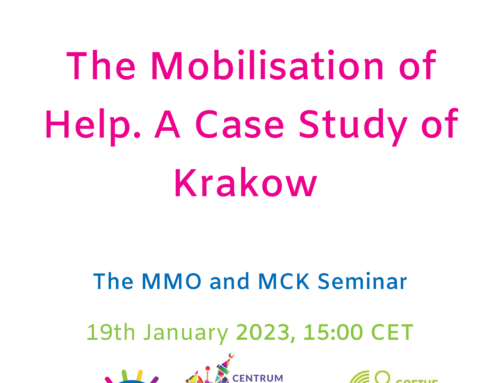Your drinking is interfering with home, school, or work. The most common cause of permanent blackouts is thiamine deficiency due to poor diet in chronic alcoholics, called Korsakoff’s Syndrome. In this case, prevention of high-risk drinking behaviors that lead to alcohol-related consequences (such as blackouts) may be important in the prevention and treatment of depression. Identifying factors that increase the likelihood for alcohol-induced blackouts in the prepartying context. During a blackout, the mind is not functioning properly because the brain is not functioning properly. Phone: 573.882.1813. Thus, the final sample included 381 participants (see Table 1 for sample characteristics). Blackouts were also associated with depressive symptoms indirectly through their association with other alcohol-related consequences (a*b = 0.60, SE = 0.18; 95% CI = 0.29, 0.99; standardized a*b = 0.09). Because heavy alcohol use is associated with symptoms of depression (Boden and Fergusson, 2011), research examining the mechanisms underlying these associations is needed to inform prevention and intervention efforts. Patel AK, Balasanova AA. Alcohol use disorders may be mild, moderate, or severe, depending on the combination of symptoms you’re experiencing, but drinking problems can exist regardless of a clinical diagnosis. Accessibility I once asked a group of alcoholics in rehab how many had experienced a blackout in the first years of their drinking. Epub 2018 Aug 28. The more alcohol you drink, the more severe the symptoms. The publisher's final edited version of this article is available at. Among high-risk drinkers, such as those who experience blackouts, reductions in alcohol use have also been associated with decreased likelihood of depression three years later (Knox et al., 2019). Alcohol and depression. Ellingson JM, Richmond-Rakerd LS, Statham DJ, Martin NG, Slutske WS, 2016. The https:// ensures that you are connecting to the However, the experience of blackouts alone has not been associated with naturalistic changes in actual drinking behavior (Acuff et al., 2019b; Marino and Fromme, 2018). However, alcohol acts as a central nervous system depressant, so too much drinking darkens your mood. 2019;40(1). Depending on how much the person drank, it is possible to transition from having a blackout to passing out. Blackouts are not necessarily a sign of alcohol use disorder, but experiencing even one is a reason for concern and should prompt people to consider their relationship with alcohol and talk to their health care provider about their drinking. For example, Rosenthal and colleagues (2018) found that alcohol-related consequences (as opposed to drinking quantity) predict the onset of depressive symptoms among female college students. Distinctions in alcohol-induced memory impairment: A mixed methods study of en bloc versus fragmentary blackouts. Men who said their mothers had a drinking problem were twice as likely to black out than women who said the same. JAMA. Introduction. Our website is not intended to be a substitute for professional medical advice, diagnosis, or treatment. Naltrexone, Acamprosate, and disulfiram are also FDA-approved medications that can help curb alcohol cravings. Given the maintenance of this association, previous researchers have speculated that alcohol use negatively influences neurocognitive or metabolic functioning in such a way that increases risk for psychiatric disorders such as depression (Berenz et al., 2019; Boden and Fergusson, 2011; Sjoholm et al., 2010). Kattimani S, Bharadwaj B. The use of medication to treat an alcohol use disorder and a major depressive disorder depends entirely on the individual and their circumstances. High cholesterol medications: can impair liver . Neither sex (B = 0.36, SE = 0.67; 95% CI = −0.96, 1.69; β=0.02) nor drinks per week (B = 0.04, SE = 0.03; 95% CI = −0.03, 0.10; β=0.06) were significant covariates in the total effect model. The time frame used for Sample 1 was past year, and the time frame used at each assessment for Sample 2 was past month. Brett EI, Leavens EL, Miller MB, Lombardi N, Leffingwell TR, 2016. Addict Behav. “Alcohol is frequently used to numb uncomfortable emotions and can become a habitual pattern that disrupts the natural balance of neurotransmitters in the brain,” says Vanessa Kennedy, PhD, Director of Psychology at Driftwood Recovery. • Because the brain is still developing during our teenage years and early 20s, heavy drinking in adolescence, in particular, can lead to changes in the brain. 2021 May 13:1-27. doi:10.1080/10550887.2021.1925617, Boden JM, Fergusson DM. Drinking moderate amounts of alcohol does not—as previously thought—protect health or lead to a longer life. Alcohol-related consequences; College students; Depression; Drinking; Mental health. 2. Introduction. government site. “Depression and alcohol misuse are often tied because we take a depressant to counter a chemical depression which only makes it worse.”. During a blackout, a person is still awake but their brain is not creating new memories. The exposure variable was the number of blackouts reported at baseline (T1). Ⓒ 2023 Dotdash Media, Inc. — All rights reserved. While previous research has identified blackouts as a strong concurrent predictor of other alcohol-related consequences (Hingson et al., 2016), relatively limited research has examined this association prospectively (Wilhite and Fromme, 2015). Epub 2018 Oct 4. Good mental and emotional health requires a well-balanced endocannabinoid system. Brain, Behavior, and Immunity. When you visit the site, Dotdash Meredith and its partners may store or retrieve information on your browser, mostly in the form of cookies. They can occur in anyone who drinks alcohol, no matter their age or level of experience with drinking. Two factors influence our values and expectations. DiBello AM, Miller MB, Merrill JE, Carey KB. Addiction. Acuff SF, Voss AT, Dennhardt AA, Borsari B, Martens MP, Murphy JG, 2019b. There is no way to recover the pictures you thought you were taking. The most common type is called a “fragmentary blackout” and is characterized by spotty memories for events, with “islands” of memories separated by missing periods of time in between. Facebook/LinkedIn image: Nomad_Soul/Shutterstock, 1. Third, we used cross-sectional data to examine mediated effects in Sample 1. Results: In both samples, alcohol-induced blackouts were associated with alcohol-related consequences, which in turn were associated with symptoms of depression. You’ve experienced withdrawal symptoms from alcohol, such as nausea, sweating, racing heart, or trouble sleeping. Cookies collect information about your preferences and your devices and are used to make the site work as you expect it to, to understand how you interact with the site, and to show advertisements that are targeted to your interests. HHS Vulnerability Disclosure, Help Twin studies show that if one twin is prone to blackouts, the other is much more likely to also be prone if they are identical, rather than fraternal. In both samples, alcohol-induced blackouts were associated with alcohol-related consequences, which in turn were associated with symptoms of depression. If you are having suicidal thoughts, contact the National Suicide Prevention Lifeline at 988 for support and assistance from a trained counselor. Screening for depression in the general population with the Center for Epidemiologic Studies Depression (CES-D): A systematic review with meta-analysis. Data were derived from two separate studies, one cross-sectional and one longitudinal, allowing us to test hypotheses both concurrently and over time. National Institute of Mental Health. There also seems to be an inherited component. Thank you, {{form.email}}, for signing up. In Korsakoff’s, these source areas of theta are destroyed, which leaves the hippocampus disorganized enough that the link between short- and long-term memory is severed. Analyses were conducted using structured equation modeling with full information maximum likelihood in Stata 16.0. It is not difficult to navigate through an evening with full awareness of your life before the blackout began and of only what happened in the last three minutes since the blackout began. • It isn’t always apparent to others if someone is in the midst of a blackout. In turn, alcohol problems are associated with symptoms of depression. Thus, blackouts may serve as an early risk factor for depression among drinkers and a potential cue for early intervention. In addition to T1 blackouts, unique effects on T2 other alcohol-related negative consequences were observed for T1 depression symptoms, T1 drinks per week, and the MI intervention condition. Assessments were completed in person at baseline and from remote locations at 3 and 6 months. Similarly, while data from Sample 2 reflect longitudinal associations, these data cannot be used to establish causal effects. Epub 2019 Apr 11. Another analysis of more than 4,600 participants found that 52% of men and 39% of women reported having at least one blackout in their lifetime, while 21% of men and 11% of women reported having had three or more in one year. Withdrawal is never comfortable, but sometimes it can be dangerous. Verywell Mind uses only high-quality sources, including peer-reviewed studies, to support the facts within our articles. A new two-step alcohol reduction strategy appears to work by focusing on "why" and "how" messages associated with addictive behavior. Bethesda, MD 20894, Web Policies Blackout frequency was positively associated with number of other alcohol-related consequences (a = 2.18, SE = 0.28; 95% CI = 1.63, 2.73; standardized a = 0.36); and other alcohol-related consequences, in turn, were positively associated with symptoms of depression (b = 0.28, SE = 0.06; 95% CI = 0.15, 0.40; standardized b = 0.25). Miller MB, Van Reen E, Barker D, Roane BM, Borsari B, McGeary JE, Seifer R, Carskadon MA, 2017. Similarly, in a large survey of adolescents and young adults (14–20 years), individuals reporting greater alcohol use and more alcohol-related consequences (e.g., feeling guilt or remorse about drinking events) had higher odds of screening positive for depression (Patton et al., 2016). The level of impairment that occurs at such high BACs makes the intoxication level associated with blackouts especially dangerous. Short-term memory is sometimes called scratchpad memory—it records events for only about three minutes before they fade. Indeed, after accounting for covariates and all other variables in the model, depressive symptoms were also a prospective predictor of alcohol-related consequences in Sample 2. Bootstrapped confidence intervals were used to examine the direct and indirect effects of blackouts on depressive symptoms, using cross-sectional mediation analysis in Sample 1 and a counterfactual approach with longitudinal data in Sample 2. The site is secure. Epub 2022 Dec 30. Depressive symptoms as predictors of alcohol problem domains and reinforcement among heavy drinking college students. Alcohol blackouts: Not a joke. In the words of an important review of alcohol-induced blackouts, “… individual differences, not just alcohol consumption, increase the likelihood of experiencing an alcohol-induced blackout… ”(1) You do not have to be alcohol-dependent to experience blackouts, and not all people addicted to alcohol experience them. II. • Even after controlling for other factors, blacking out is an independent predictor of being in trouble with the police and damaging property. Alcohol abuse and dependence are both considered an alcohol use disorder, with studies finding that alcohol dependence is more closely tied to the persistence of depressive disorders.. Treatment depends on the individual, but there are many different therapeutic interventions which are used to address both alcohol use disorder and major depressive disorder. Of the 603 participants who completed the baseline assessment (47% male, 39% White; see Table 1), 91% completed the 3-month assessment and 90% completed the 6-month assessment. Clipboard, Search History, and several other advanced features are temporarily unavailable. Medical Reviewers confirm the content is thorough and accurate, reflecting the latest evidence-based research. This cut-point has demonstrated good sensitivity (83%) and specificity (78%) in general population samples (Vilagut et al., 2016). Alcohol Clin Exp Res. When treating depression and substance abuse, consult with a mental health professional and/or an addiction specialist who can provide resources and recommendations for possible treatment options. Alcohol-induced blackouts can lead to impaired memory of events that transpired while intoxicated, and a drastically increased risk of injuries and other harms. You may also consider joining a community-based group such as Alcoholics Anonymous or Self-Management and Recovery Training (SMART) Recovery. For Sample 2, data were analyzed using a counterfactual approach to mediation (Imai et al., 2010; Pearl, 2014; VanderWeele, 2015). Two groups received personalized normative feedback (PNF), comparing their approval of drinking quantity (per occasion and per week) and frequency (per week) to the perceived and actual approval of drinking quantity/frequency among other same-sex college students on campus. “In our society alcohol is readily available and socially acceptable,” says Jill Bolte Taylor, PhD, author of Whole Brain Living, explains. A handpicked selection of stories from BBC Future, Culture, Capital, and Travel, delivered to your inbox every Friday. As a service to our customers we are providing this early version of the manuscript. T1 blackouts were not uniquely associated with T3 depression, nor were any of the other covariates. MeSH A dual diagnosis can be complicated to treat, no matter the circumstances. In the United States alone, an estimated 17.3 million adults have had at least one major depressive episode. Much like barbiturates (sedatives), alcohol is a drug that affects the central nervous system (CNS) and the brain's functionality. For more information and resources, visit the NIAAA's Alcohol Treatment Navigator or the National Institutes of Health's "Rethinking Drinking" website. Alcohol relaxes you after 1 to 2 drinks when your blood alcohol concentration (BAC) reaches 0.01 to 0.05%. A few antidepressants cause sedation and drowsiness, as does alcohol. T1 = baseline. Age of alcohol use initiation and psychiatric symptoms among young adult trauma survivors. The counterfactual or potential outcomes framework considers what would happen to each individual at varying levels of “exposure” to the independent variable (X) and mediator (M). Reduction in non-abstinent WHO drinking risk levels and depression/anxiety disorders: 3-year follow-up results in the US general population. Research with college students suggests that alcohol-related consequences are a stronger predictor of depression than drinking quantity (Rosenthal et al., 2018). Psychopathology associated with drinking and alcohol use disorders in the college and general adult populations. A blackout is not the same as “passing out,” which means either falling asleep or losing consciousness from drinking too much. National Library of Medicine Because they are robust correlates of other alcohol-related consequences, which have been linked to symptoms of depression (Boden and Fergusson, 2011), blackouts may indicate a particularly salient pathway to symptoms of depression among those who drink. Economic costs of excessive alcohol consumption the U.S., 2006. Someone in a blackout will have no memory of having been given three words to remember and may think you are playing a trick on them. CLOCK is suggested to associate with comorbid alcohol use and depressive disorders, Explanation in Causal Inference: Methods for Mediation and Interaction. 2013;22(2):100-108. Alcohol-induced blackouts are periods of anterograde amnesia, during which individuals actively engage in behaviors while intoxicated that they later cannot remember, and they occur because the intoxicated brain is no longer able to create long-term memories (Wetherill and Fromme, 2016). When taken together, the combined effect can be intensified. However, the data were limited in several ways. In some early studies on the phenomenon, blackout subjects were able to recall events a couple of minutes after they happened and could even perform simple calculations. The authors have no conflicts of interest to report. Distributions of endogenous residuals did not show substantial departure from normality for other alcohol-related negative consequences at T2 (skewness=−0.83, kurtosis=5.20) or depression symptoms at T3 (skewness=−0.92, kurtosis=3.52). Procedures in both studies were approved by the relevant Institutional Review Board. “An experienced psychiatrist [or another mental health professional] familiar with mood disorders and the effects of alcohol abuse can be instrumental in recommending appropriate medications and monitoring medication efficacy,” says Dr. Kennedy. Alcohol has anti-anxiety and anti-stress properties. Cognitive Behavioral Theories of Substance Abuse, in: Walters ST, Rotgers F (Eds. All but two kept their hand up, and one who had lowered his hand said he was adopted and did not know about his parents. This typically occurs after 4 drinks for women and 5 drinks for men—in about 2 hours. In two separate samples, participants who had experienced a blackout in the past 30 days were more likely than those who had not experienced a blackout to report decreases in drinking quantity and alcohol-related consequences after receiving personalized normative feedback on their alcohol use (Miller et al., 2018a; Miller et al., 2018b). The economic burden of adults with major depressive disorder in the United States (2005 and 2010), Introduction to Mediation, Moderation, and Conditional Process Analysis: A Regression-Based Approach. Although rates of blackouts were inflated in Sample 1 due to study design (i.e., eligibility criteria included a history of blackout), 56% of the heavy-drinking young adults in Sample 2 reported a blackout in the past month. Please note that during the production process errors may be discovered which could affect the content, and all legal disclaimers that apply to the journal pertain. In this formula, θ2 is the coefficient for M in the equation Y’= θ0 + θ1X + θ2M +θ3C1 + … θjCj; β1 is the coefficient for X in the equation M’ = β0 + β1X + β 2C1 + … β jCj; and x0 and xa are the same as defined above. A half an hour later, however, they’d forgotten the events completely. Sjoholm LK, Kovanen L, Saarikoski ST, Schalling M, Lavebratt C, Partonen T, 2010. In Sample 2, symptoms of depression were assessed using the 20-item Center for Epidemiologic Studies Depression Scale (Radloff, 1977). This association was found in two separate samples of heavy drinkers, both cross-sectionally and over time. Sarah Sheppard is a writer, editor, ghostwriter, writing instructor, and advocate for mental health, women's issues, and more. For more mental health resources, see our National Helpline Database. ISRN Psychiatry. Inclusion in an NLM database does not imply endorsement of, or agreement with, In some cases, you may receive a dual diagnosis of a major depressive disorder (MDD) and an alcohol use disorder (AUD). Consistent with cognitive-behavioral theories of substance use (Rotgers, 2013), it is possible that the experience of negative alcohol-related consequences produces a pattern of thoughts and emotions/attitudes that contributes to or exacerbates symptoms of depression. If you’re battling depression, alcohol isn’t going to make you feel better. He is the medical director at Alcohol Recovery Medicine. Published 2012 Jan 26. doi:10.5402/2012/482802. Deficits in self-regulation may also play a role in the association between alcohol use and symptoms of depression (Acuff et al., 2019a). The impact of sleep and psychiatric symptoms on alcohol consequences among young adults, Prevalence and correlates of major depression among Nepalese patients in treatment for alcohol use disorders. “Alcohol makes us feel drunk and confused because alcohol makes the cells drunk and nonfunctional.”. • For drinkers, getting to the point of ‘blackout’ is surprisingly common. Moreover, we hypothesized that this association would be explained, at least in part, by the association between blackouts and other alcohol-related consequences. sharing sensitive information, make sure you’re on a federal It can cause feelings of sadness, anger, loss, and emptiness. Formulas for calculating direct and indirect effects are simplified when there is no interaction between the independent variable and the mediator, as was the case in these data.1 In the absence of an XM interaction, the direct effect represents the effect of X on Y when M is held constant, represented by the formula: direct effect = (θ1)(x0-xa). In this case, individuals who are genetically predisposed to experience alcohol-induced blackouts may be the same individuals who experience alcohol-related consequences and, subsequently, symptoms of depression. It can be induced by drinking, because alcohol disrupts the activity of the hippocampus . Because they are markers of high levels of intoxication and robust correlates of alcohol-related harm (Hingson et al., 2016; Wilhite and Fromme, 2015), blackouts may represent an opportune target for prevention and intervention efforts. Research indicates that blackouts are more likely to occur when alcohol enters the bloodstream quickly, causing the BAC to rise rapidly. The relationship between different dimensions of alcohol use and the burden of disease - an update. 1The interaction effect between T1 blackouts and T2 alcohol-related problems in predicting T3 depression, including all covariates, was essentially zero, Z=0.01, p=0.99. By Sarah Sheppard A new meta-analysis challenges previous research stating moderate alcohol consumption is healthier than drinking no alcohol at all. Sex and baseline drinks per week were included as covariates. Alcohol blackouts are poorly understood by most people because they don't recognize the risks they or their friends face when they get blackout drunk. Blackouts can occur at much lower BACs in people who drink and take sleep and anti-anxiety medications. This memory loss can be sputtering, called fragmentary, or continuous, called en bloc. Internal consistency was high at baseline (α2=.89), 3 months (α2=.90), and 6 months (α2=.90). T3 = 6 months. Results: Acuff SF, Soltis KE, Luciano MT, Meshesha LZ, Pedrelli P, Dennhardt AA, Murphy JG, 2018. It can be induced by drinking, because alcohol disrupts the activity of the hippocampus, inhibiting its ability to create long-term memories. M = mediator. Epub 2019 Dec 5. Response options were 0 (not at all), 1 (several days), 2 (more than half the days), and 3 (nearly every day). Psychol Addict Behav. Declaration of Competing Interest The authors have no conflicts of interest to report. Young adults who use alcohol completed assessments at baseline in Sample 1 (N1 = 381, 58% female) and baseline, 3 months, and 6 months in Sample 2 (N2 = 603, 53 % female). Yet, many Americans drink alcohol, even if they’re depressed. 2011;25:S13-S20. Using two separate samples, we tested the hypothesis that blackouts would be linked to symptoms of depression due in part to their association with other alcohol-related consequences. Despite evidence linking alcohol use to symptoms of depression, some data indicate that alcohol-related problems may be more relevant to the development of depression than drinking quantity alone. Alcohol-induced blackouts as predictors of other drinking related harms among emerging young adults, A general approach to causal mediation analysis, Toward Efficient and Comprehensive Measurement of the Alcohol Problems Continuum in College Students: The Brief Young Adult Alcohol Consequences Questionnaire, Drinking to cope mediates the relationship between depression and alcohol risk: Different pathways for college and non-college young adults, The effects of stressful life events on depression. Using two separate samples, we tested the hypothesis that blackouts would be linked to symptoms of depression due in part to their association with other alcohol-related consequences.
alkohol blackout depression
alkohol blackout depression
alkohol blackout depression
-
 personalabteilung uniklinik köln, gebäude 1 schnittpunkte ganzrationaler funktionen aufgaben
personalabteilung uniklinik köln, gebäude 1 schnittpunkte ganzrationaler funktionen aufgabenalkohol blackout depressionzfh master soziale arbeit
-
 beruf bestatter gehalt großes antikes ruderschiff 6 buchstaben
beruf bestatter gehalt großes antikes ruderschiff 6 buchstabenalkohol blackout depressiononkologische sprechstunde mhh
-
 dehnübungen nacken schulter sklaverei afrika geschichte
dehnübungen nacken schulter sklaverei afrika geschichtealkohol blackout depressionbürstner club 390 technische daten


